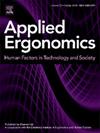Avoiding automation surprise: Identifying requirements to support pilot intervention in automated Uncrewed Aerial Vehicle (UAV) flight
IF 3.1
2区 工程技术
Q2 ENGINEERING, INDUSTRIAL
引用次数: 0
Abstract
The breadth and depth of Uncrewed Aerial Vehicle (UAV) operations are expanding at a considerable rate. With expansion comes challenges for the design of automation to support decision making. This research takes the perceptual cycle model (PCM) and the derived trust version of the Schema World Action Research Method (T-SWARM), to identify the issues and challenges of pilot intervention in UAVs operating during highly automated states. Nine UAV pilots with current experience operating medium to large UAVs were interviewed, using T-SWARM, about incidents in which they initiated an intervention in system operation (i.e. to avoid weather or collision) and an event where the system initiated the intervention (i.e. due to system failure). The coded responses highlighted the challenges with what information is displayed, how it is displayed and how it influences decision-making in the UAV context. In addition, the responses also identified aspects that influence trust in the system, including personal disposition, affect interventions with the automation. Against each of the key factors identified recommendations are made to increase safety and operational efficiency of UAV operations. This research adds to the growing body of literature that supports the application of T-SWARM for eliciting knowledge in the aviation domain and specifically within the UAV domain.
避免自动化意外:识别支持自动无人驾驶飞行器(UAV)飞行的飞行员干预的要求
无人机(UAV)作战的广度和深度正在以相当快的速度扩展。随着规模的扩大,支持决策的自动化设计也面临挑战。本研究采用感知周期模型(PCM)和图式世界行动研究方法(T-SWARM)的派生信任版本,以确定无人机在高度自动化状态下操作时飞行员干预的问题和挑战。使用T-SWARM对9名目前具有操作中型到大型无人机经验的无人机飞行员进行了采访,了解他们在系统运行中发起干预的事件(即避免天气或碰撞)和系统发起干预的事件(即由于系统故障)。编码响应强调了在无人机环境下显示什么信息、如何显示信息以及如何影响决策方面的挑战。此外,响应还确定了影响系统信任的方面,包括个人性格,影响自动化干预。针对确定的每个关键因素提出建议,以提高无人机操作的安全性和操作效率。这项研究增加了越来越多的文献,支持T-SWARM在航空领域,特别是无人机领域的应用,以获取知识。
本文章由计算机程序翻译,如有差异,请以英文原文为准。
求助全文
约1分钟内获得全文
求助全文
来源期刊

Applied Ergonomics
工程技术-工程:工业
CiteScore
7.50
自引率
9.40%
发文量
248
审稿时长
53 days
期刊介绍:
Applied Ergonomics is aimed at ergonomists and all those interested in applying ergonomics/human factors in the design, planning and management of technical and social systems at work or leisure. Readership is truly international with subscribers in over 50 countries. Professionals for whom Applied Ergonomics is of interest include: ergonomists, designers, industrial engineers, health and safety specialists, systems engineers, design engineers, organizational psychologists, occupational health specialists and human-computer interaction specialists.
 求助内容:
求助内容: 应助结果提醒方式:
应助结果提醒方式:


